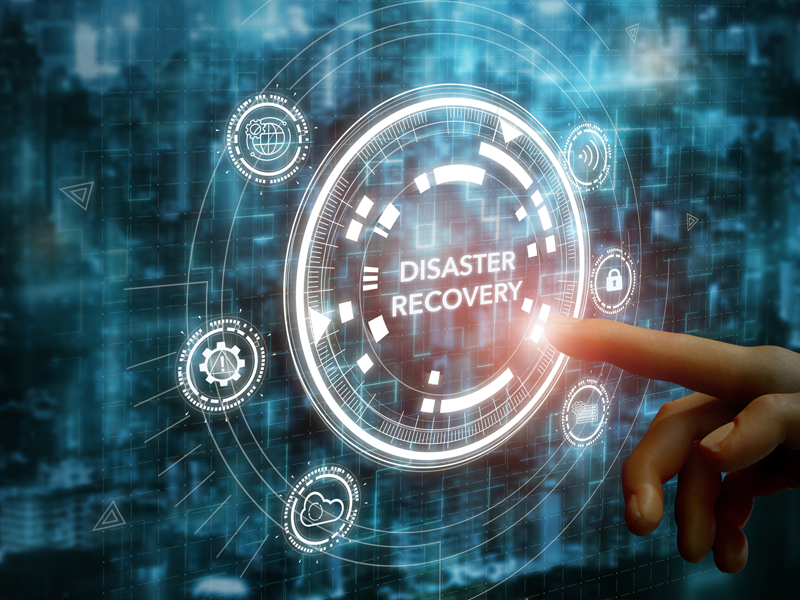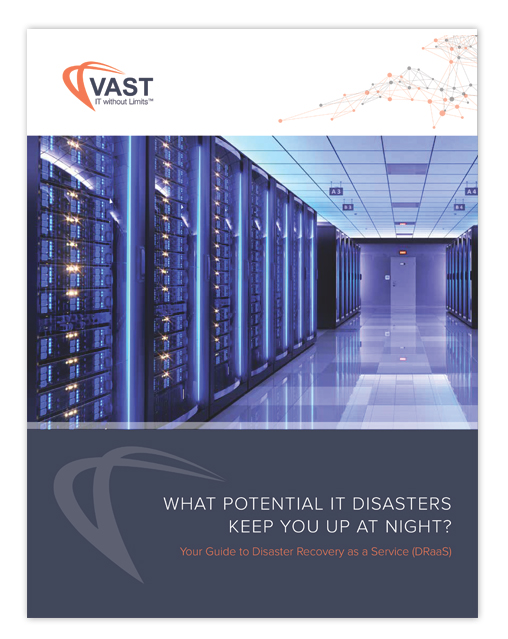Companies relying on their IT environment must protect it from potential disaster scenarios. Threat actors can unleash ransomware or other forms of destructive malware at any time, crippling business-critical systems. Extreme weather events can cause disruptions to the power grid. A simple mistake by a system administrator may delete an essential database. Entities may exploit a vulnerability in the software supply chain and damage the infrastructure.
A viable disaster recovery (DR) plan is necessary to safeguard an organization’s valuable computing environment. Unfortunately, planning, testing, and executing a traditional DR plan can be expensive. Many small and medium-sized businesses lack the financial resources to implement a traditional disaster recovery plan.
Disaster recovery-as-a-service (DRaaS) provides organizations with an effective and efficient method of protecting their IT environment. A DRaaS solution minimizes the expense and complications associated with traditional disaster recovery. Organizations can expect to enjoy the following five key benefits when adopting a DRaaS approach to disaster recovery.
DRaaS Offers a Cost-Effective Solution
Substantial upfront costs are associated with the traditional approach to disaster recovery. An organization must maintain a secondary recovery site with the requisite hardware and software. Companies must ensure readiness by leasing hardware and purchasing software licenses for the recovery. Traditional disaster recovery is expensive and may be seen as excessive and wasteful if a recovery is never necessary.
A DRaaS solution minimizes these costs by eliminating the need to maintain an alternate site. A cloud service provider (CSP) provisions resources when needed to address a recovery scenario. This approach can drastically reduce capital expenditures and ongoing operational costs. The customer only pays for the complete environment when it is required for a recovery.
Faster and More Efficient Recovery
A DRaaS solution provides faster and more efficient disaster recovery. Traditional DR methods typically require key personnel to travel to the recovery site to manage the process. In some cases, the recovery can be severely delayed due to travel problems or the unavailability of essential team members.
Eliminating the need to access the recovery site physically streamlines the recovery process. Recovery time objectives (RTOs) and recovery point objectives (RPOs) can be more aggressive to minimize business impacts. Recovery can start as soon as a disaster is declared and cloud resources are provisioned.
Scalable Disaster Recovery
An organization’s IT environment usually evolves over time. Introducing new technology and applications can increase or radically change workloads. The volume of data required for an effective recovery can quickly grow beyond original expectations and make DR plans obsolete. Organizations must modify disaster recovery plans to address these changes or risk an incomplete and ineffective recovery.
DRaaS solutions are easily scaled up or down to reflect changes in a company’s production environment. Additional resources don’t need to be provisioned until recovery is necessary. Organizations eliminate the costs associated with modifying an alternate recovery site. They can guarantee access to the resources required to recover their systems and valuable data during a disaster.
Automation and Reduced Manpower Requirements
Most DRaaS solutions offer automated backup, failover, and system recovery features. Automation streamlines the process and eliminates potential oversights or human errors that can negatively impact recovery. Teams can bring systems online quickly to minimize the impact on business operations and customer satisfaction.
Companies can focus on core operations by leveraging automation and the cloud provider’s technical resources. This feature of a DRaaS approach should appeal to small businesses with limited staffing. Management can utilize employees’ skills to keep the business running while relying on the provider’s experienced personnel for the technical aspects of the recovery.
Enhanced Flexibility and Resiliency
A DRaaS solution provides customers with enhanced flexibility and resiliency in several ways.
- Companies can recover cloud resources so employees can access them from any location. There is no reason to travel to the office to validate recovered systems and restore customer-facing applications. Organizations can quickly get back to business and minimize lost revenue with the connectivity provided by a cloud-based DRaaS solution.
- Recovering in alternate geographic regions also provides enhanced resiliency. Companies can recover to an area unaffected by widespread events to ensure a smooth recovery. This ability can be vital to address disasters caused by extreme weather or political unrest. It may be unsafe to recover to the initially planned region.
- Adopting a DRaaS approach enables customers to test portions of the DR plan at will. Teams can address issues with processes and procedures to ensure a successful recovery. Identifying and rectifying potential recovery issues improves resiliency and business continuity.
VAST’s DRaaS Solution
VAST offers its customers an effective DRaaS solution that can be tailored to their specific business requirements. Our DRaaS solution enables companies of any size to protect their IT environment against a disaster effectively. DRaaS minimizes your recovery time and lets you return to business as quickly as possible.
VAST’s DRaaS solution leverages the technology and functionality of AWS Elastic Disaster Recovery. Companies obtain the following advantages with this scalable, cloud-based approach to disaster recovery.
- Cost savings are provided by eliminating idle resources and only paying for the entire disaster recovery site when needed.
- Companies can recover systems and applications within minutes to a previous point in time or the most recent state.
- Teams have a unified process for testing, recovering, and failing over applications without a specialized skillset.
- Organizations can scale replication servers up or down to reflect changing operational requirements.
AWS Elastic Disaster Recovery enables companies to employ various recovery strategies that include:
- Recovering on-premises resources to AWS;
- Restoring cloud-based applications to run natively in AWS;
- Recovering to different AWS regions to meet availability requirements.
Our experienced and skilled team can help your organization develop and implement a robust DR plan leveraging the benefits of DRaaS. The solution supports Windows and Linux systems. Companies can start small and quickly scale up to protect more of their environment.
VAST’s DRaaS solution eliminates expensive vendor and license fees while protecting your company’s critical IT resources. Contact us today and start protecting your business with a cutting-edge DRaaS solution.



